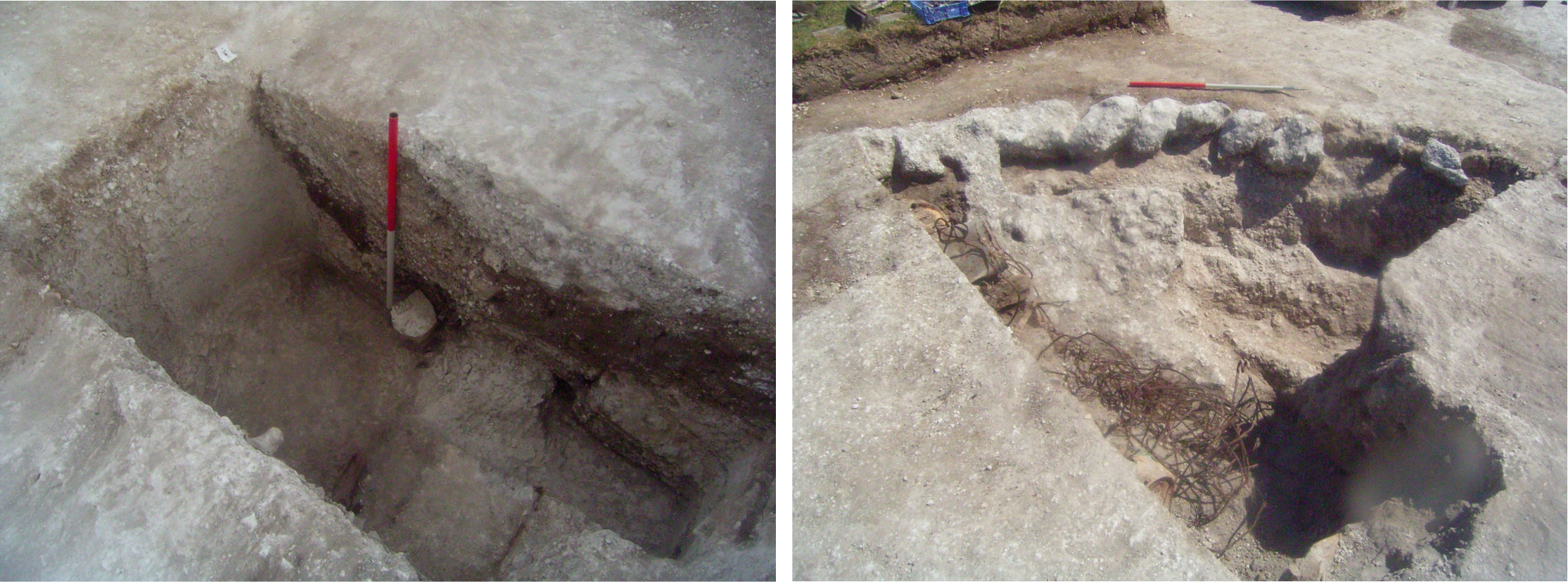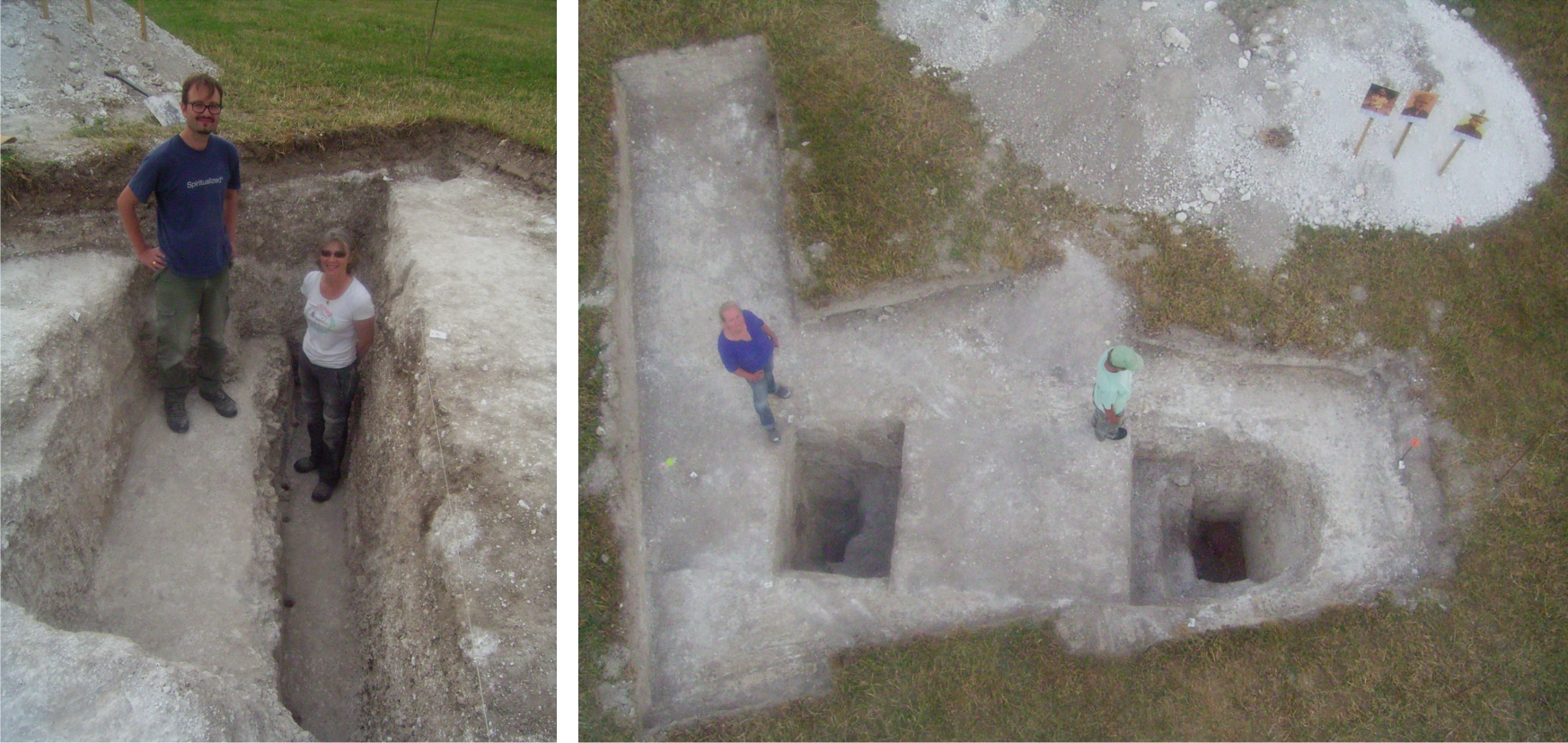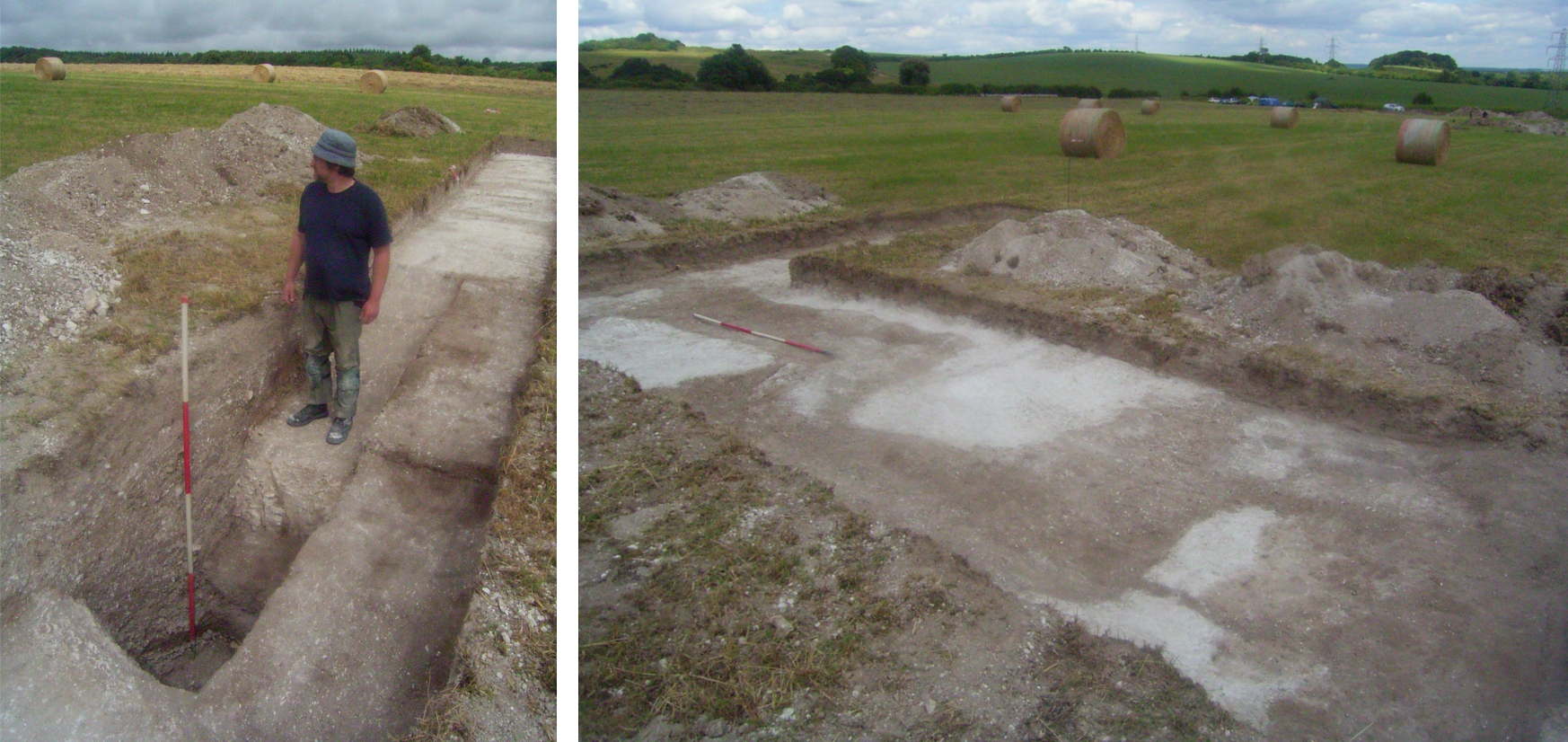Week 2 of the Wessex Archaeology/
Breaking Ground Heritage/
Defence Infrastructure Organisation investigation of the Perham Down WWI practice trenches was completed with some significant new discoveries. In particular, the excavations showed just how well-preserved this extensive trench system is, and the time and effort that had gone into its construction.
Excavation on the front line of the ‘German’ defences, by Dickie and Richard, revealed an unexpectedly complex sequence of use, including a sap (trench used to advance into land to gain a military advantage) dug towards the British lines that would have provided ‘eyes and ears to the ground’ in no-man’s land.
In an adjacent part of the front line the trenches had been left open and later used to dispose of military material after WWII – to which the farmer had then added unwanted agricultural debris. Despite this, Dave was able to define part of the fire-step, as well as the remains of probable WWI sand bags (filled with chalk) that survived around part of the trench.
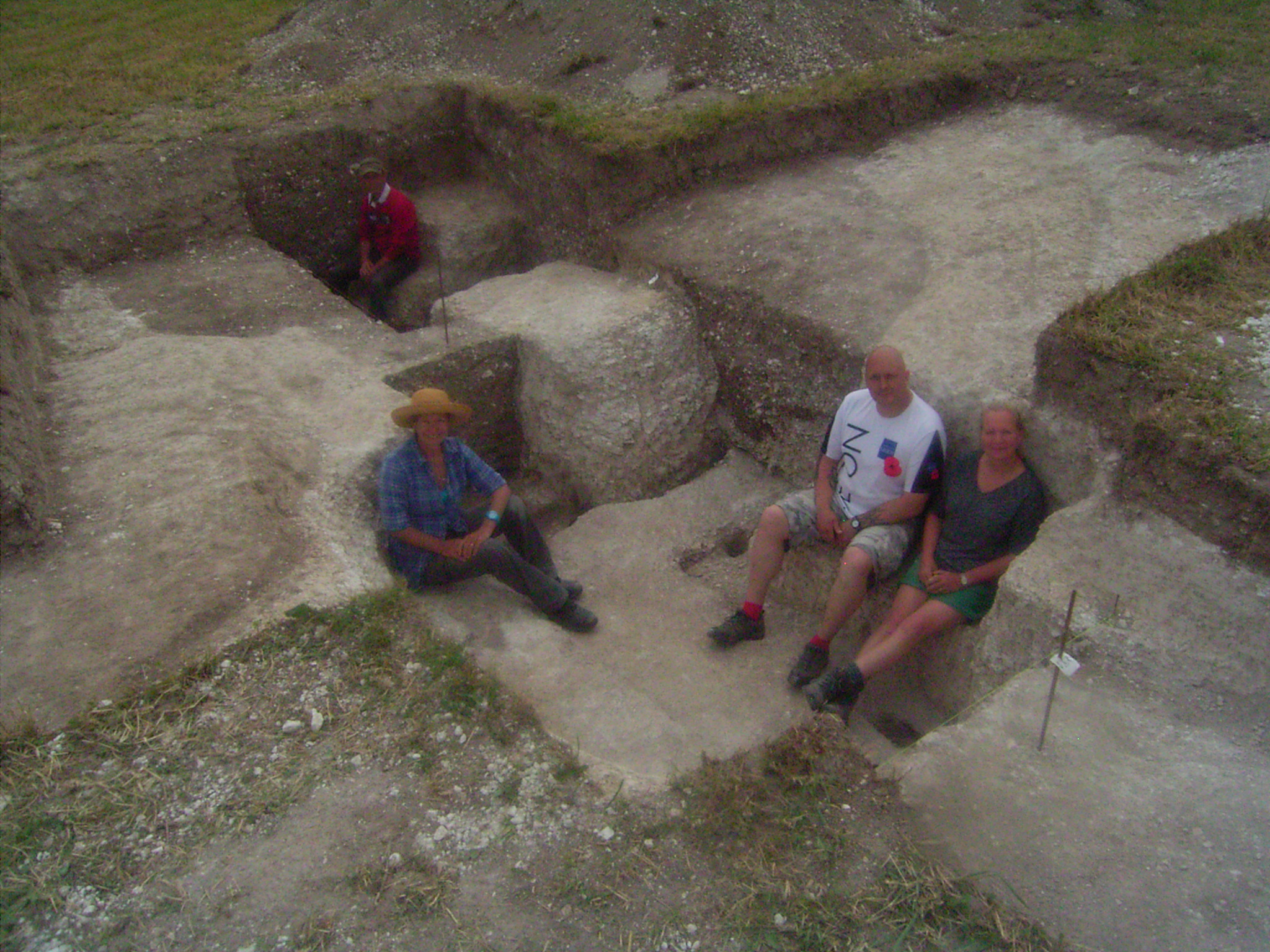
Back from the front line, excavations were completed on a pair of shelters, an aid post and an officers’ latrine. The trample layers (areas where people stood) indicated heavy use. The locations and functions of these features were conveniently indicated on a rare and detailed contemporary map of the system, and in all cases it was clear that these elements had been properly constructed.
The shelters, with a communications trench running through them and a supply trench joining them from the west, contained chalk-cut benches providing seating on each side – as demonstrated here by Briony, Matt, Owen and Jayne. There were also the remains of timber posts that would have supported the roof and held the side revetting in place. In the bottom were two biscuit tins and a condensed milk tin – all empty!
The aid post had wider benches than the shelters, probably to hold stretchers, while in the corner there was evidence for a brazier (revealed Carlos and Janine), essential to keep the injured warm. The timber revetting didn’t survive, but postholes remained (as well as the voids left by the posts and stakes), along with part of the wire windlassing which held it all together.
The officers’ latrine turned out to be substantial, with a deep pit for urine at the end that was partly filled with small blocks of chalk, butchered animal bone and sand, which together would have provided appropriate material to form the soakaway. Congratulations to Kathy, Phil, Vicki and Nicola for getting to the bottom of this!
Moving further back, the supply trench was designed to be a two-way ‘corridor’ to avoid collisions between soldiers moving to and from the front line. It had been dug to its full depth on the south side, but was relatively shallow to the north – perhaps one of the rare examples where for pragmatic reasons the system was not fully dug; it was also made straighter than indicated on the contemporary plan. Neil provides a good indication of its scale below.
Finally, the second line of ‘German’ defences was represented by a ‘crenelated’ trench and string of associated redoubts, both clearly visible on aerial photographs and by geophysical survey. Interestingly, Jason and Rog revealed evidence that recruit training involved this trench being converted from a defensive position to an attacking one, with a shallow trench being dug in the base along the east side, leaving a new fire-step to the west.
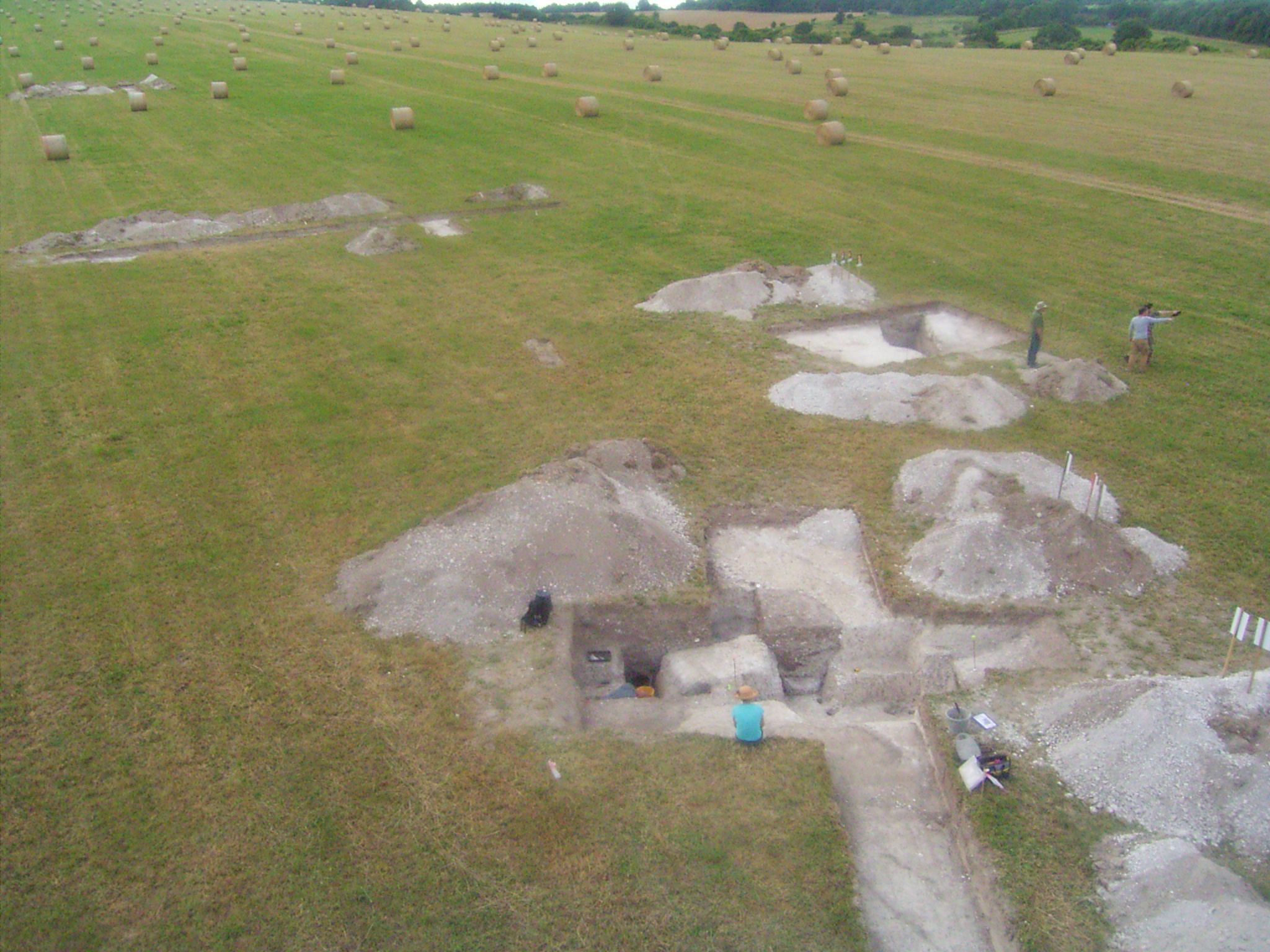
So, Friday saw the end of a warm, busy and exciting week – more geophysics, visits from Carenza Lewis and Phil Harding, Richard Broadhead demonstrating replica Vickers and Maxim machine-guns, the Iris drone team, Sean and his ‘cherrypicker’, and the appearance of several familiar and welcome faces – including a guest appearance from our Winno (Steve Winterton).
Next week: Rob, Scotty and Matt – three men in a communications trench; a look at the finds; and some final thoughts – for the moment.

